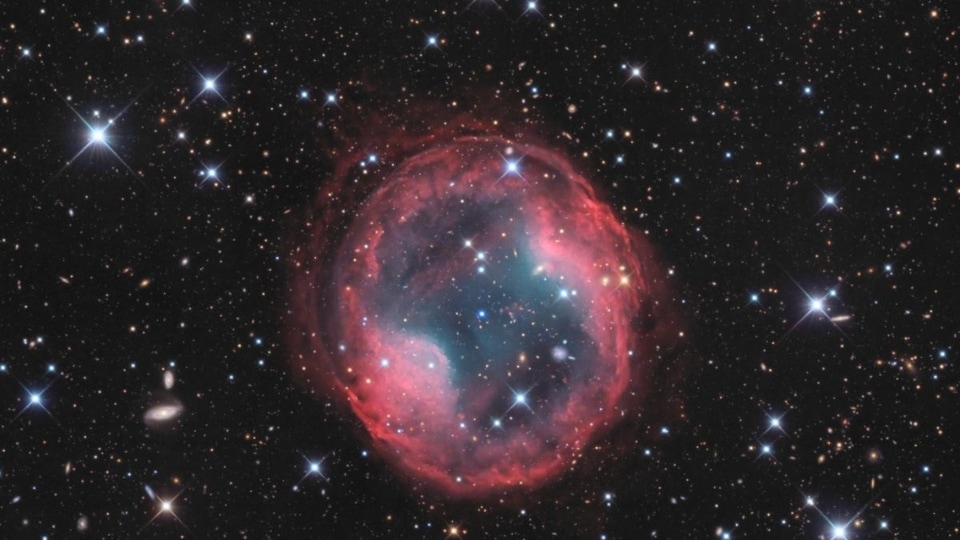NASA Astronomy Picture of the Day 24 February 2023: Death Shroud! Here is Headphone Nebula
NASA’s Astronomy Picture of the Day is a mesmerizing snapshot of headphone-shaped nebula known as Jones-Emberson 1.

According to NASA, a nebula is a vast collection of gas and dust in space. These celestial objects can be found in the Interstellar space that separates stars. There are two types of nebulae: those that are created by the remnants of a dying star, and those that serve as regions where stars are formed and eventually birthed. Although many nebulae are located extremely far away, NASA has been able to observe them using advanced technology such as the Spitzer Space Telescope, the Hubble Space Telescope, and the recently launched James Webb Space Telescope.
NASA's Astronomy Picture of the Day is a mesmerizing snapshot of a stellar nebula known as Jones-Emberson 1. It is also called as the Headphone Nebula owing to its peculiar headphone-like shape. The Headphone Nebula is located about 1600 light-years away from Earth in the constellation Lynx. The Nebula was captured by astronomers Serge Brunier, Jean-François Bax and David Vernet with the help of Centre Pedagogique Planete Univers.
NASA's description of the picture
Planetary nebula Jones-Emberson 1 is the death shroud of a dying Sun-like star. It lies some 1,600 light-years from Earth toward the sharp-eyed constellation Lynx. About 4 light-years across, the expanding remnant of the dying star's atmosphere was shrugged off into interstellar space, as the star's central supply of hydrogen and then helium for fusion was finally depleted after billions of years. Visible near the center of the planetary nebula is what remains of the stellar core, a blue-hot white dwarf star. Also known as PK 164 +31.1, the nebula is faint and very difficult to glimpse at a telescope's eyepiece.
But this deep broadband image combining 22 hours of exposure time does show it off in exceptional detail. Stars within our own Milky Way galaxy as well as background galaxies across the universe are scattered through the clear field of view. Ephemeral on the cosmic stage, Jones-Emberson 1 will fade away over the next few thousand years. Its hot, central white dwarf star will take billions of years to cool.
Catch all the Latest Tech News, Mobile News, Laptop News, Gaming news, Wearables News , How To News, also keep up with us on Whatsapp channel,Twitter, Facebook, Google News, and Instagram. For our latest videos, subscribe to our YouTube channel.































